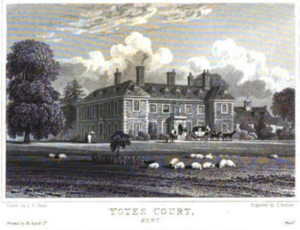MRP: people
Contents
People
Sir George Oxenden
-->"you haveing for y:e tyme past truely made your life a kinde of á pilgrimage, br
you have seene many of y:e great wonders of y:e Great God, Ocularly, w:ch wee br
have onely by Contemplation, & in y.t I (that have never beene out of my br
native Countrey) have taken great pleasur"<--
-->(Robert Raworth to Sir George Oxenden, 1663)<--
As president of the English East India company in Surat between 1663 and 1669, Sir George Oxenden left a private correspondence with his sister, Elizabeth Dalyson, and with other kin,close friends, commercial partners. The correspondence, now in the British Library, provides a starting point from which to explore their lives. Bound in still bright red Indian leather, the volumes are the work of Oxenden’s copyists, his factory writers, rather than autograph manuscripts. The communication is largely one way, with Oxenden’s own voice often to be inferred from the tone and substance of his correspondents.
A careful reading of the correspondence reveals the existence of two connected joint stock companies formed in in the decade prior to Oxenden’s presidency by Sir George Oxenden and five former colleagues from Surat. Two slightly divergent lists of subscribers to the two ventures were subsequently discovered by this author in the National Archives in chancery papers related to the ventures. In 1655 the English East India company was in disarray, its monopoly had expired, and the eastern markets were up for grabs. Yet, the ventures have little visibility in the historiography, and are the subject of only a brief footnote by Sir William Foster.
Sir George Oxenden, engraving, 1668
Sources
C10/109/102 (1663); C10/82/2 (1664)
IOR/H/MISC/32 Various letters relating to the Williams Venture
Letter from Robert Raworth to Sir George Oxenden, Grays Inn, 9th April 1663, ff. 106-107
The Oxenden papers, Vols. XIII-XVIII, Add. MSS. 40708-40713
William Foster (ed.), XXXX, citing Home Miscellaneous Vol. 26, 10 June 165[8?] (folio 5)
James Master of Yotes Court
James Master of Yotes Court was the cousin of Sir George Oxenden’s sister’s husband, Richard Master, whose son James Master was Sir George Oxenden’s nephew. His expense books, which were published in four parts in Archaeologica Cantiania in the late nineteenth century, provide an insight into the life of a Kent relation of similar age to Sir George Oxenden. He visited East Langdon occasionally and used his cousin James for legal advice in the 1650s and 1660s, as is seen in payments recorded in his expense book. Interestingly, Thomas Stanley inserted a codicil into his will in 166X, which appointed James Master of Yotes Court, his close neighbour, to replace one of his deceased overseers.
James Master built Yotes Court in 1659, pulling down the previous mansion on the site, which had been the property of his step-father Sir Thomas Walsingham. In 1828 the property was described in some detail: “It consists of two stories surmounted by a high roof, with dormer windows, and is built of brick, with stone quoins and dressings: a small Corinthian porch opens to a Hall fifty-eight feet long by nineteen feet wide; having on the right, a Dining-Room, and on the left of the entrance, a Drawing-room. The whole of the grounds comprise about one thousand acres, of which the house, garden, and shrubberies, immediately adjoining, occupy six acres; the water in the park, from whence all the ponds in the neighbourhood are fed, extends over five or six acres, and there are about three hundred acres of cover. From the principal entrance to Yotes Court, in the Mereworth Road to Forge Gate, is a beautiful drive of nearly a mile.” An 1889 Order of the Land Commissioners scheduled the Yotes Court estate, then owned by Viscount Torrington, and described it as comprising nine hundred and forty acres, which the schedule broke into thirteen blocks, with land in both the parishes of Mereworth and West Peckham. However, no information is available on the size of the estate at the time of the construction of Yotes Court.
Yotes Court, built 1659
Sources
‘The expense book of James Master, pt. II, A.D. 1655-57', Mrs. Max Dalison transcribed, Canon Scott Robertson, Archaeologica Cantiania, vol. 16 (London, 1886)
‘Expense-book of James Master, pt. III, A.D. 1658-1663', Mrs. Max Dalison transcribed, Canon Scott Robertson, Archaeologica Cantiania, vol. 17 (London, XXXX),
‘Expense-book of James Master, Esq. Pt. IV’, Archaeologica Cantiania, vol. 18, pp. 114-XXX
‘The life of James Master’, Archaeologica Cantiania, vol. 18, pp.157-168
Mereworth and West Peckham document]: Scheduling of Yotes Court Estate: Official copy of an 1889 Order by the Lands Commissioners scheduling this 940 acre Estate owned by Viscount Torrington
'Yotes Court', in J.P. Neale, Views of the seats of noblemen and gentlemen, in England, Wales, Scotland, and Ireland,vol. 4 (London., 1828), p. unnumbered
Thomas Stanley
Sources
C 9/49/48 Dalison v. Oxenden 1667
C 9/40/57 Oxenden v. Dallison and Stanley 1668
C 9/240/194 Stanley v. Walsall 1650
C 10/14/38 William Cane v Barnabas Walsall and Thomas Stanley: Rochester, Kent 1651
C 22/58/39 Dalyson v. Oxinden. Between 1558 and 1714
Inventory of Thomas Stanley, VH 96/6226
Sir Maximilian Dallison
William Dallison
Elizabeth Dallison
Sources
Maximilian Dallison
Sources


